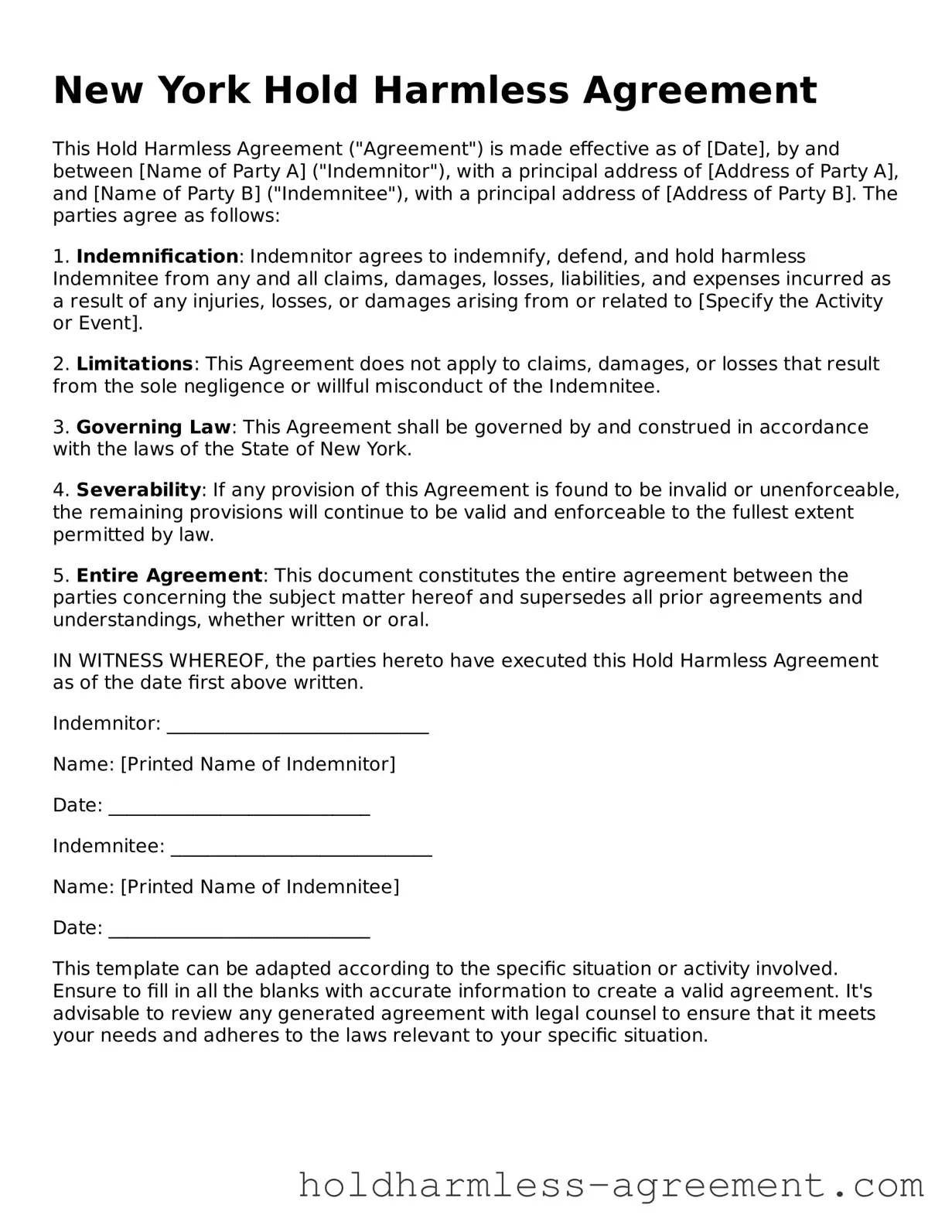What is a Hold Harmless Agreement in New York?
A Hold Harmless Agreement is a legal document that protects one party from liability for any injuries or damages that may occur during a specific activity or event. In New York, these agreements are commonly used in various contexts, such as rental agreements, construction contracts, and event planning. By signing this document, one party agrees not to hold the other party responsible for any claims or damages that arise, thereby providing a level of legal protection.
Who typically uses a Hold Harmless Agreement?
Various individuals and organizations utilize Hold Harmless Agreements. Common users include:
-
Property owners renting out their space for events.
-
Contractors working on construction projects.
-
Event organizers hosting activities in public or private venues.
-
Businesses providing services that may involve risks, such as recreational activities.
These agreements serve to clarify responsibilities and mitigate potential legal disputes.
What are the key components of a Hold Harmless Agreement?
A well-drafted Hold Harmless Agreement typically includes the following elements:
-
Identification of Parties:
Clearly state the names and roles of the parties involved.
-
Scope of Agreement:
Define the specific activities or events covered by the agreement.
-
Liability Waiver:
Include a clause that releases one party from liability for injuries or damages.
-
Indemnification Clause:
Outline the responsibilities of each party in case of claims or damages.
-
Governing Law:
Specify that New York law governs the agreement.
These components work together to create a comprehensive understanding of the agreement's purpose and limitations.
Are Hold Harmless Agreements enforceable in New York?
Yes, Hold Harmless Agreements can be enforceable in New York, provided they meet certain legal requirements. The agreement must be clear, specific, and voluntarily signed by both parties. Courts generally uphold these agreements unless they are deemed unconscionable or if they attempt to waive liability for gross negligence. Therefore, it is crucial to draft the agreement carefully to ensure its enforceability.
Can a Hold Harmless Agreement protect against all types of liability?
No, a Hold Harmless Agreement does not provide blanket protection against all types of liability. While it can protect against ordinary negligence, it cannot shield a party from liability arising from intentional misconduct or gross negligence. Additionally, certain statutory liabilities, such as those related to workers' compensation, may not be waivable. Understanding these limitations is essential for both parties involved.
How can I create a Hold Harmless Agreement?
Creating a Hold Harmless Agreement involves several steps:
-
Identify the Parties:
Clearly define who is involved in the agreement.
-
Outline the Scope:
Specify the activities or events that the agreement covers.
-
Draft the Agreement:
Write the agreement, ensuring clarity and specificity in language.
-
Review Legal Requirements:
Ensure compliance with New York laws and regulations.
-
Obtain Signatures:
Have both parties sign the agreement to make it legally binding.
Consulting with a legal professional can also provide guidance and ensure that the agreement meets all necessary legal standards.
